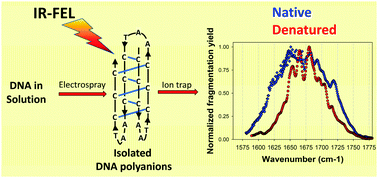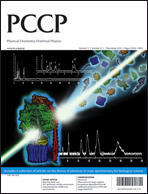Zwitterionic i-motif structures are preserved in DNA negatively charged ions produced by electrospray mass spectrometry†
Abstract
![[double bond, length as m-dash]](https://www.rsc.org/images/entities/char_e001.gif) O stretching modes. We then investigated the gas-phase conformations of the
O stretching modes. We then investigated the gas-phase conformations of the

- This article is part of the themed collection: Advances in mass spectrometry for biological science

 Please wait while we load your content...
Please wait while we load your content...